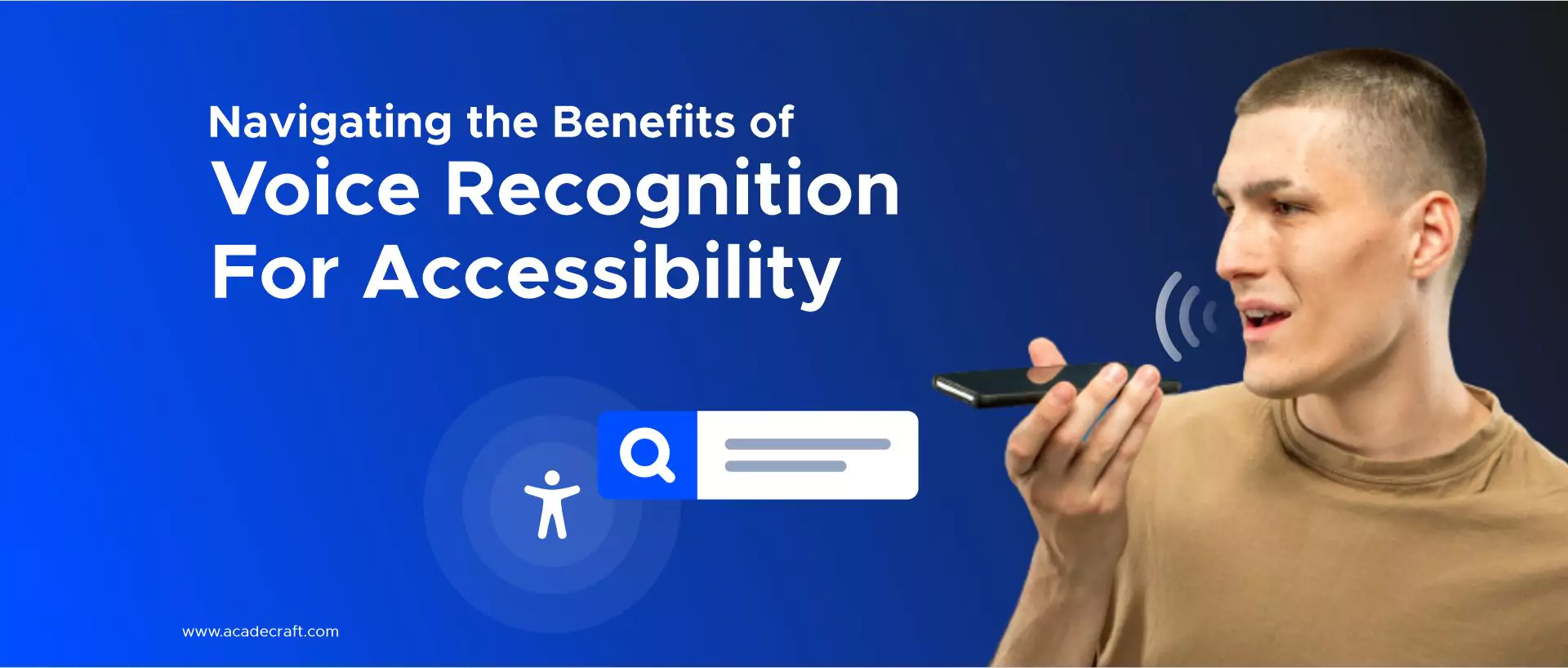
Technology is rapidly evolving while making businesses more efficient and accessible. Traditional methods, where many of us struggled to type or navigate complex menus, are long gone. With voice recognition technology, individuals with disabilities now have the power to control devices and access information seamlessly, simply by speaking.
Whether it's sending a text message, searching the internet, or even operating household appliances, voice recognition accessibility has opened up many possibilities for those previously excluded. Explore the multiple benefits and applications of this groundbreaking technology.
Voice recognition is a technology that converts spoken words into written text or commands. It uses algorithms and artificial intelligence (AI) to analyze and interpret the human voice, allowing devices to understand and respond to spoken instructions.
This technology has come a long way since its inception, and today it is more precise and reliable than ever before. Voice recognition has revolutionized how we interact with technology, making it more convenient and accessible.
Imagine driving and wanting to text without taking your hands off the wheel. One of the best voice recognition examples in the industry today is- you can say, "Hey Siri, send a text to John," and dictate your message. With Siri, you can speak your message, which will be converted into written text to be sent on your behalf.
Voice recognition makes communicating safer while driving and saves you time and effort. It has revolutionized our daily lives by making tasks like sending messages hands-free and more accessible for everyone.
One important aspect of voice recognition technology is the role of voice-over in enhancing accessibility for websites while aiding individuals with visual impairments. Voiceover is a feature that uses synthetic speech to audibly describe what is happening on a device's screen.
Combined with voice recognition, utilizing the best voice-over services in your digital device allow visually impaired individuals to navigate and interact with their devices using only their voice. This means that tasks like sending messages or accessing information can be done independently and efficiently, empowering individuals with visual impairments to participate in the digital world.
There are numerous benefits of voice recognition accessibility. Let us understand one by one:
Voice recognition technology allows users to perform tasks hands-free, saving time and effort. This is precisely beneficial for individuals with physical disabilities or limitations. For example, people with limited mobility can use voice recognition technology to control their smart home devices, such as adjusting the thermostat or turning on lights without interacting with them physically. This increases their independence and makes their daily tasks more convenient.
With voice recognition, users can dictate their thoughts and ideas directly into their devices, eliminating the need for typing. This can significantly speed up tasks such as writing emails, creating documents, or conducting research. For an artist with a physical disability, voice recognition technology can be a game-changer.
They can use their voice to command their computer to open art software, select colors, and even create strokes on the canvas. This innovative use of voice recognition allows them to fully express their creativity without any limitations posed by their physical condition.
Through voice recognition accessibility features, individuals with disabilities or impairments can communicate more easily and safely. This technology allows them to send messages or make calls hands-free, reducing the risk of accidents while driving or performing other tasks.
For example, a person with a visual impairment could use voice recognition technology to dictate emails, eliminating the need to rely on someone else to type their messages. This technology increases their independence and allows them to communicate more efficiently and effectively.
It makes technology more accessible for individuals with visual impairments or those who have difficulty typing or using traditional input methods. For example, a person with a physical disability such as paralysis may rely on voice recognition technology to navigate their smartphone or computer, enabling them to send messages, make calls, and access information without manual input.
Voice recognition technology has advanced to the point where it can accurately recognize and transcribe speech in diverse languages, making it accessible to a wider range of users. For example, a person traveling to a foreign country can use voice recognition technology to converse with locals in their native/local language without learning the language beforehand. They can speak into their device and have their words instantly translated, enabling them to navigate the new environment and overcome language barriers easily.
Voice recognition systems are the wizards behind translating spoken words into digital actions. There's a variety of them, each with its unique approach and application. Let's unveil a few:
Using audio description services for creating voice recognition technology benefits individuals with visual impairments. Users can better understand their surroundings and interact with the world by providing detailed descriptions of visual elements in real time.
This inclusive feature allows them to access information and participate in conversations that would otherwise be challenging or impossible without the assistance of others. These voice recognition systems ultimately bring our digital world closer to human interactions. From personal assistants to secure authentication, they shape how we communicate with technology.
We have explored various benefits of using voice recognition accessibility technology for digital devices. They have not only made our lives more convenient but have also enhanced accessibility for individuals with disabilities.
As technology upgrades, we can expect even more innovative applications to bridge the gap between humans and machines further. Whether through voice commands, real-time translations, or personalized recommendations, voice recognition systems are undoubtedly transforming the digital landscape and paving the way for a more inclusive and interactive future.
Share